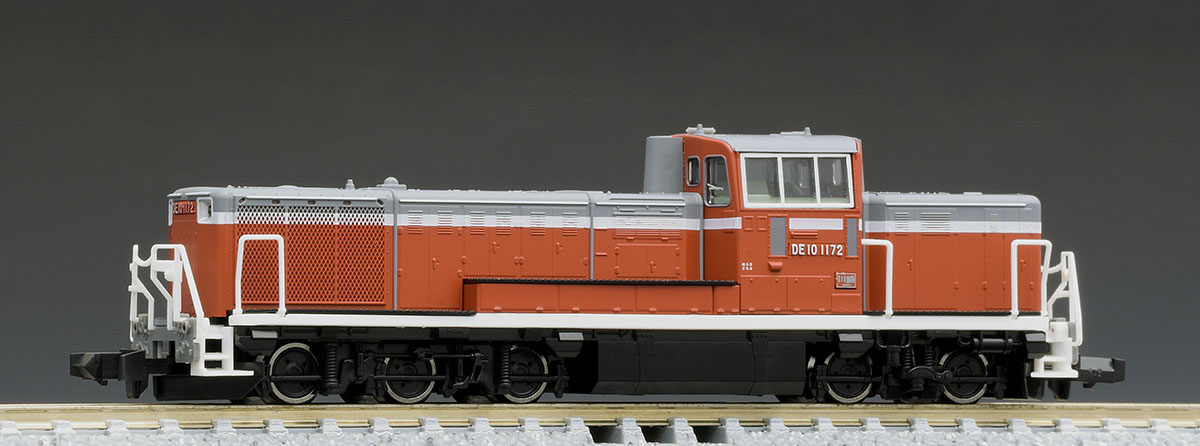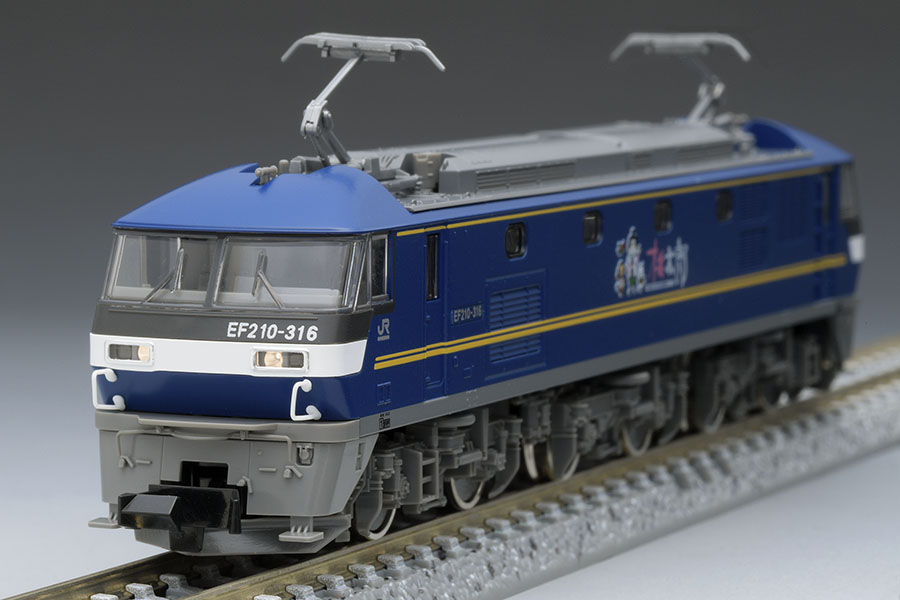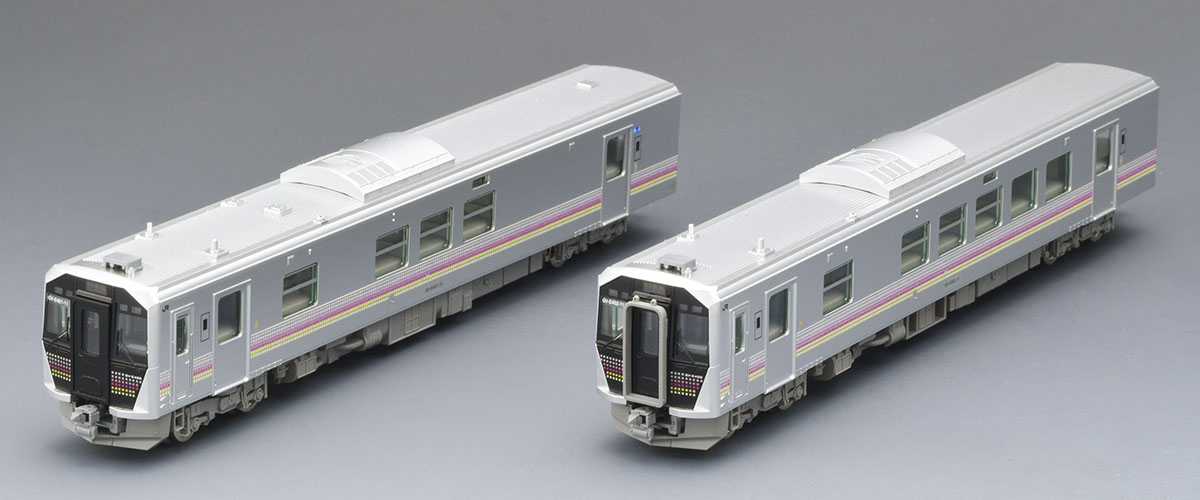Due to the large amount of orders being processed, some stock levels may occasionally not reflect actual stock levels due to differences in sale processing times.
Please call to check availability to avoid disappointment.
Please call to check availability to avoid disappointment.
Trains
Not kept in store, ordered weekly as required

Tomix N DD51-500 cold region type
The DD51 type deployed in Hokkaido was characterized by its reinforced cold and snow resistant structure with snowplows and rotating windows, as well as the removal of the radiator cover on the side of the bonnet in some cases. It replaced steam locomotives such as the D51 and C57 types…
- Model
- TMX02250
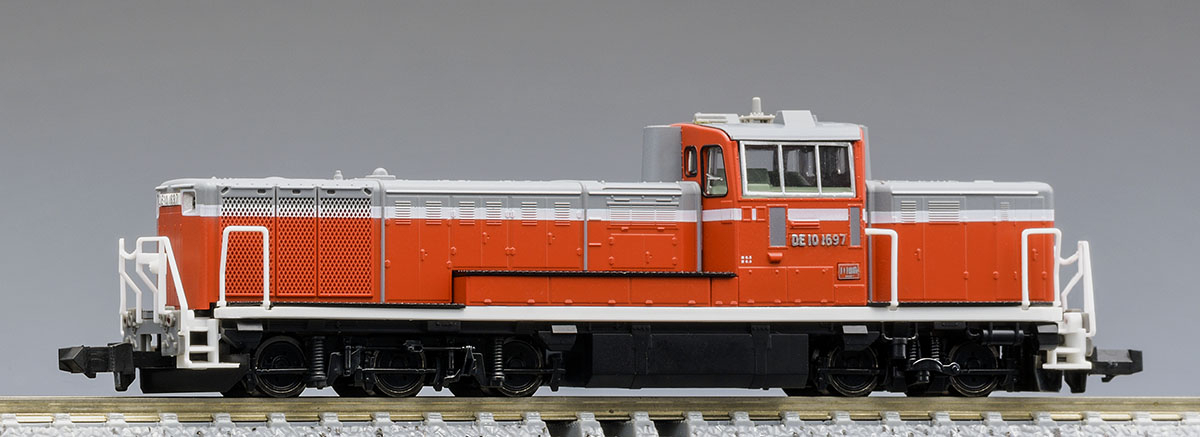
Tomix N DE10-1000 Cold Place Model, Takasaki Train Center
The DE10 type was introduced in 1966 as a general-purpose diesel locomotive used on branch lines and for shunting freight cars. Among the DE10 type owned by JR East, the vehicles mainly used in the Tokyo metropolitan area have had a door added to the front of the bonnet…
- Model
- TMX02247
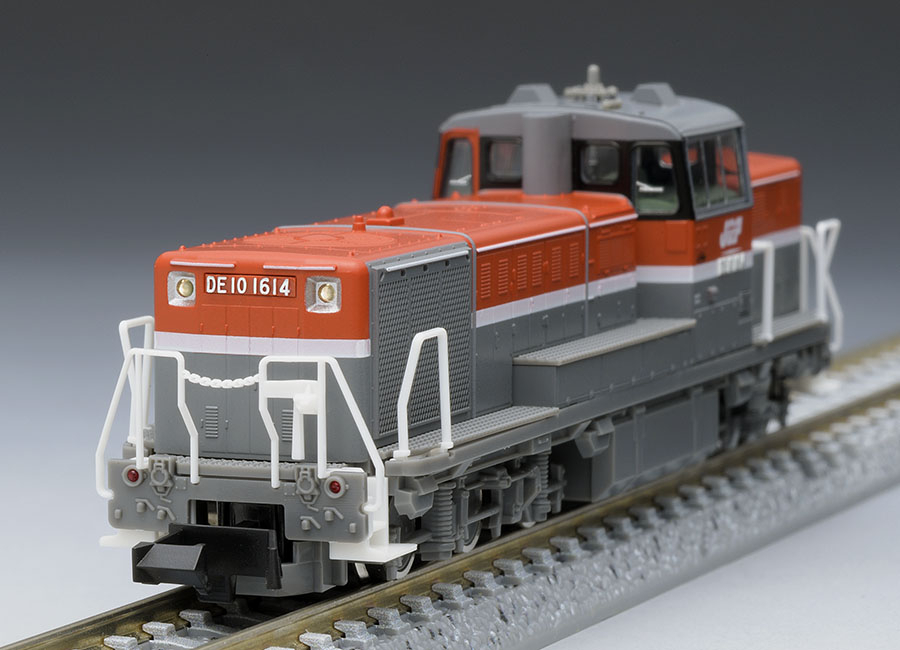
Tomix N DE10-1000 type diesel locomotive (Warm region type/JR freight)
-The DE10 type was introduced in 1966 as a general-purpose diesel locomotive used for branch lines and freight car shunting. Some of the vehicles owned by JR Freight underwent renewal work in the 2000s, and were initially painted with a blue base, but the design was later changed to…
- Model
- TMX02244
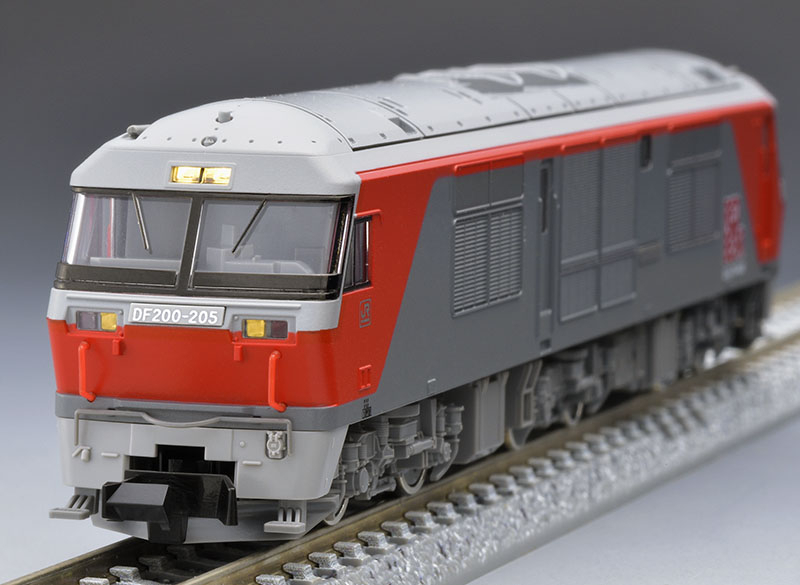
Tomix N DF200-200 type diesel locomotive (new paint)
The DF200 type is an electric diesel locomotive developed by JR Freight and was introduced in 1992. Since its introduction, it has been active only in Hokkaido, but some of the 100s were transferred to the Aichi Engine District from 2016, and at the same time they were converted…
- Model
- TMX02252

Tomix N E129-0 Train, 4 cars pack
The E129 series is a new type of train for the Niigata area that was introduced in 2014. It was introduced as a replacement for the 115 series operating in the same area and as a replacement for the E127 series transferred to Echigo Tokimeki Railway. Based on…
- Model
- TMX98474

Tomix N E129-100 Train Basic, 2 cars pack
The E129 series is a new type of train for the Niigata area that was introduced in 2014. It was introduced as a replacement for the 115 series operating in the same area and as a replacement for the E127 series transferred to Echigo Tokimeki Railway. Based on…
- Model
- TMX98475

Tomix N E231-500 Commuter Train Yamanote Line Basic, 6 cars pack
The E231 series 500 series is a vehicle that appeared in 2002 for the Yamanote Line. Two 6-door cars were connected in the formation, but it was replaced with a 4-door car by 2017 to accommodate the movable platform fence. After the successor E235 series was introduced in…
- Model
- TMX98716

Tomix N E233-3000 Train Basic A, 4 cars pack
The E233 series is a general-purpose train that appeared in 2006. The suburban type cousin appeared in 2009. In the formations that appeared after 2011, car No. 6 has a toilet.FeaturesReproduce the E233-3000 series Reproduce the roof of the regular car with a thick bead shape on the…
- Model
- TMX98506

Tomix N E233-3000 Train Basic B, 5 cars pack
The E233 series is a general-purpose train that appeared in 2006. The suburban type cousin appeared in 2009. In the formations that appeared after 2011, car No. 6 has a toilet.FeaturesReproduce the E233-3000 series Reproduce the roof with a thick bead shape on the roof This product can…
- Model
- TMX98507

Tomix N E235-0 Train Late Type Yamanote line addon A, 4 cars pack
The E235 series is a new type of commuter train introduced on the Yamanote Line in March 2015. 50 trains of the same series will be introduced by 2020, replacing the conventional E231 series. The bead shape of the roof has been changed from the formation that appeared…
- Model
- TMX98526

Tomix N E235-0 Train Late Type Yamanote line Basic, 4 cars pack
The E235 series is a new type of commuter train introduced on the Yamanote Line in March 2015. 50 trains of the same series will be introduced by 2020, replacing the conventional E231 series. The bead shape of the roof has been changed from the formation that appeared…
- Model
- TMX98525

Tomix N E259 Limited Express Narita Express Basic Set 4cars
The E259 series, which appeared in 2009, is a limited express train that began operation in October of the same year as the successor to the 253 series. A renewal was announced in March 2023, and the first train with a new paint scheme was released in May of the…
- Model
- TMX98551

Tomix N E5 Tohoku Hokkaido SHINKANSEN Hayabusa Basic Set 4cars
The E5 series, which was introduced as "Hayabusa" in 2011, began coupled operation with the E6 series in 2013, and as of 2022 operates at a maximum speed of 320 km/h. In recent years, baggage storage areas have been added inside the cars to accommodate larger baggage, so some of…
- Model
- TMX98497

Tomix N E6 Akita SHINKANSEN Komachi addon, 4 cars pack
The E6 series, which was introduced in 2013, is operating at a maximum speed of 320km/h as of 2022, in conjunction with the E5 series and other trains on the Tohoku Shinkansen section. In recent years, in consideration of the increasing size of baggage, a baggage storage area has…
- Model
- TMX98501

Tomix N E6 Akita SHINKANSEN Komachi Basic, 3 cars pack
The E6 series, which was introduced in 2013, is operating at a maximum speed of 320km/h as of 2022, in conjunction with the E5 series and other trains on the Tohoku Shinkansen section. In recent years, in consideration of the increasing size of baggage, a baggage storage area has…
- Model
- TMX98500

Tomix N E7 Hokuritku Joetsu Shinkansen Basic Set 4 Cars
The E7 series Shinkansen is a Shinkansen vehicle that appeared in 2014.
This vehicle was developed for the opening of the Hokuriku Shinkansen Kanazawa in 2015, and began commercial operation on the Joetsu Shinkansen in 2019.
In recent years, baggage storage areas have been added to accommodate larger…
- Model
- TMX98530

Tomix N EF210 Container Train set 3cars
The EF210-100 series was produced by JR Freight from 1999 as a general-purpose locomotive for direct current sections, and appeared from number 101 to 173. From number 109 onwards, the pantograph was changed to a single-arm type. A new paint scheme was introduced around 2018. It is in operation…
- Model
- TMX98394
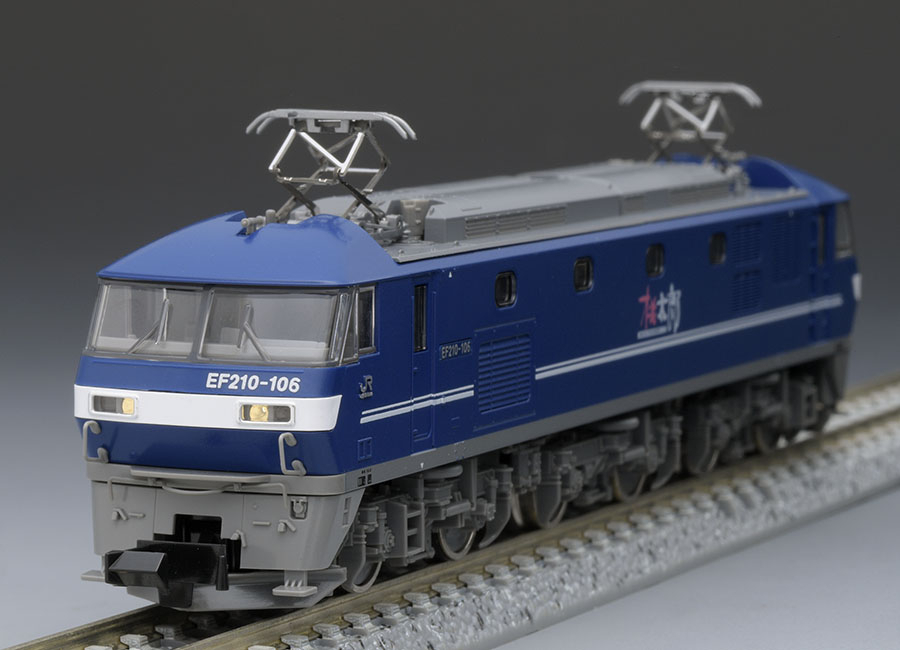
Tomix N EF210-100 electric locomotive (new paint)
EF210-100 is a locomotive manufactured by JR Freight since 2000 as a replacement for EF65 and EF66, and has appeared in numbers 101 to 173 as a general-purpose locomotive for DC sections. In June 2018, Unit 107 appeared with a new paint job, and the coloring was changed to…
- Model
- TMX07137

Tomix N EF65-2000 Revival J.N.R. color
Many of the EF65s inherited by JR Freight had been repainted in white and light blue as part of renovation work, but in 2016, the No. 2139 locomotive was restored to JNR colors, and the other vehicles were gradually restored to JNR colors, with 22 cars in JNR colors by…
- Model
- TMX07176

Tomix N EF66 Blue Train, 3 cars pack
The EF66 type is a locomotive capable of towing a 1000t class high-speed freight train with a maximum speed of 100km/h, and 55 locomotives were manufactured from 1968. From 1985, it was selected as a towing machine for the Blue Train on the Tokaido Main Line, replacing the EF65…
- Model
- TMX98388

Tomix N EF81 JR East Japan spec. with double head coupler
The EF81 type is an electric locomotive that was introduced in 1968 and is compatible with direct current and 50Hz and 60Hz alternating current. From the 137th onwards, vehicles with a awning on the front window were introduced, and the 133rd to 136th vehicles were also modified to have one…
- Model
- TMX07173
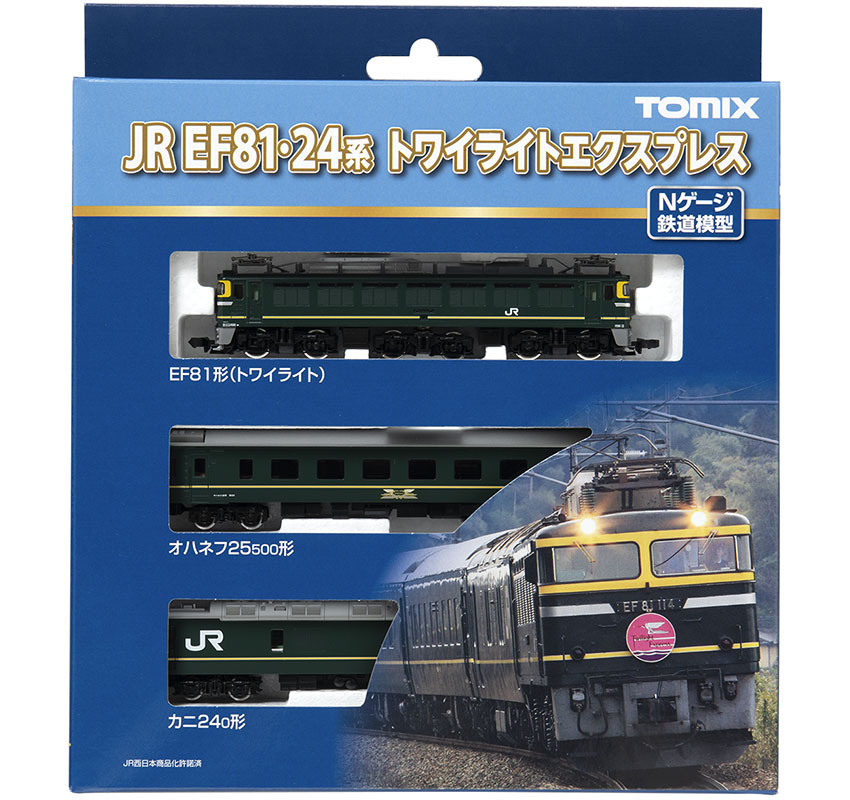
Tomix N EF81-24 Twilight Express basic set A 3cars
The Twilight Express is a sleeper express train that began operation in 1989. It was very popular, with a green color scheme instead of the traditional blue, and luxurious passenger rooms such as two-story private cars, lobby cars, and observation suites. In addition to the dedicated locomotive EF81, which…
- Model
- TMX98359

Tomix N EH800 New deco
The EH800 series was developed based on the EH500 series as a locomotive that can handle both the Shinkansen and conventional lines, including dual voltage, since the Hokkaido Shinkansen will be used in the Seikan Tunnel when it opens in spring 2016. The roof is equipped to handle both the…
- Model
- TMX07181

Tomix N GV-E401.GV-E402 Diesel Car Akita, 2 cars pack
The GV-E400 series is a diesel car that began operation in 2019 to replace conventional vehicles such as the Kiha 40 series. The GV-E401 and GV-E402 types have the same performance as the GV-E400 type, but are operated in a two-car fixed formation with a single-driving bogie.FeaturesReproduce the GV-E401…
- Model
- TMX98107

Tomix N JR EF81 Electric Locomotive Twilight
The EF81 series appeared in 1968 as a general-purpose electric locomotive with a triple power supply system that could run both DC and 50/60Hz AC. Six cars were repainted in a special color scheme to pull the 24-series Twilight Express that appeared in 1989. In 2002, silver was added above…
- Model
- TMX07122

Tomix N Keiyo Rinkai Railway KD55 Diesel locomotive No. 103
Keiyo Rinkai Railway was established as Japan's first coastal railway, and opened the Rinkai Main Line in 1963, handling freight transport in the Keiyo coastal industrial area. Among the KD55 series, No. 103 was fitted with an engine from a former JNR DD13 series transfer vehicle, and is used…
- Model
- TMX08616

Tomix N KIHA 141 Passenger Car SL Ginga set 4cars
The SL Ginga operates on the Kamaishi Line, which has steep slopes and long tunnels, and uses special carriages that have been modified from the Kiha 141 series used by JR Hokkaido as passenger cars. Each carriage is painted with illustrations of the constellations and animals that appear in…
- Model
- TMX98522

Tomix N KIHA 183-6000 Diesel Car with Tatami floor, 3 cars pack
The Kiha 183 series is a limited express diesel car that appeared in 1979. The 6000 series is a vehicle that has been modified from the 500 and 550 substitute cars into a parlor.In 1999, two lead cars and one intermediate car were introduced, and they were also combined…
- Model
- TMX98523

Tomix N KIHA 261-1000 LTD Express Diesel car set 6cars
The Kiha 261-1000 series is a limited express diesel car of JR Hokkaido that was introduced in 2006. The 7th series, which was introduced in 2018, has changed the surface finish of the outer panels and the joints, and the Kushiro-based cars of the limited express "Ozora", all of which…
- Model
- TMX98838

Tomix N KIHA 40-500 Late Type M Diesel Car
The Kiha 40 series is a general diesel car that appeared in 1977. The Kiha 40 type is a Kiha 40 series vehicle that features double cabs and a single passenger door. The Kiha 40 type 500 series is a vehicle for cold regions, and the side windows…
- Model
- TMX09470

Tomix N KIHA 66.67 Diesel Car Revival JNR, 2 cars pack
The Kiha 66 and 67 types that appeared in 1975 were mainly used in the Chikuho area. Although the paint was changed in later years, in commemoration of the millennium in 2000, it was decided to reproduce the painting of JNR vehicles at that time, and No. 1 of…
- Model
- TMX98124

Tomix N Kinki Nippon Railway 50000 series Shimakaze Basic Set (3 Cars)
Three 6-car trains of the 50000 series Shimakaze, which began operation in March 2013, have been released and are currently being used as sightseeing express trains from Osaka, Kyoto, and Nagoya to Kashiwajima. Reproduce the Kintetsu 50000 series Shimakaze Basic 3-car set (cars 1, 5, 6) Reproduce the…
- Model
- TMX98461

Tomix N Kintetsu Urban Plus Basic, 3 cars pack
The 21000 series "Urban Liner" was introduced in 1988 as a non-stop express service connecting Kintetsu Namba (currently Osaka Namba) and Kintetsu Nagoya. It was renewed and remodeled between 2003 and 2005, making it barrier-free and updating the seats, making it the Urban Liner Plus, and adding beige bands…
- Model
- TMX98291

